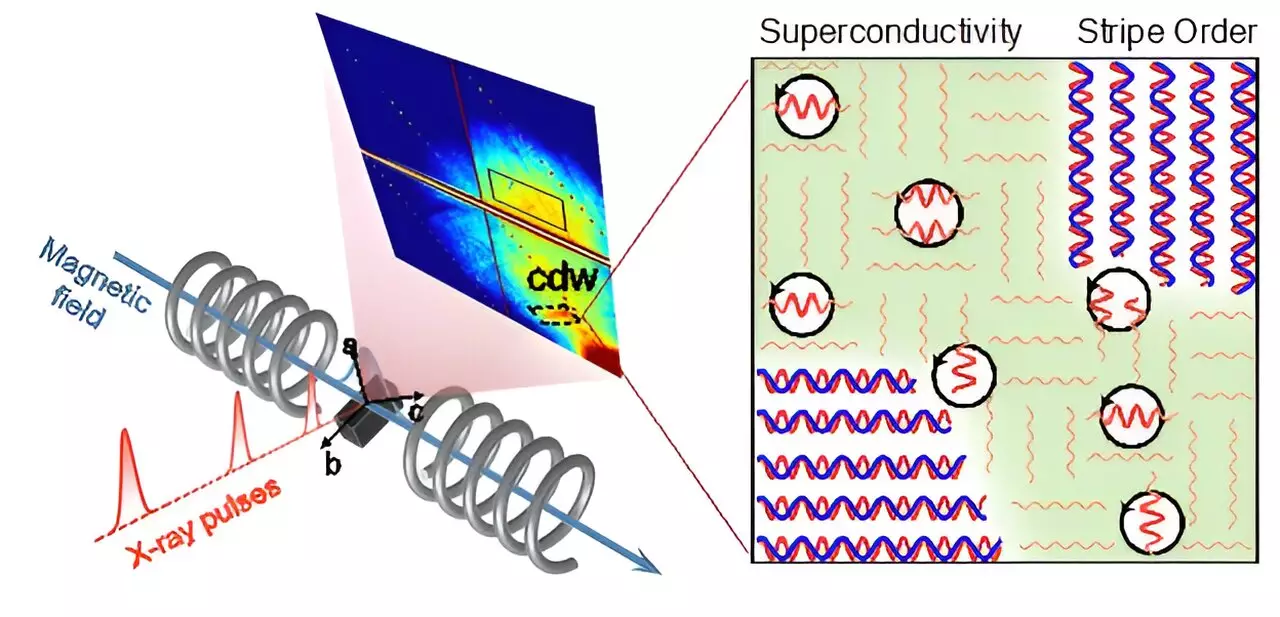Cuprates, fascinating materials infused with copper, have long intrigued researchers due to their perplexing ability to exhibit superconductivity. This phenomenon occurs under conditions that seem to defy conventional understanding. At the heart of cuprates lies a complex interplay between magnetic spin and electric charge density wave (CDW) order. Unlike typical metals where electron spins negate one another and create uniform charge distribution, the behavior of electrons in high-temperature superconductors is an intricate tapestry of interactions. Each electron, embodying both spin and charge, engages in a subtle dance, giving rise to diverse electronic states that pique scientific curiosity.
Pioneering Research in Superconductivity
Innovative research published in *Nature Communications* has shed new light on the interactions within cuprate materials, particularly focusing on the enigmatic properties that govern electron behavior. The study examines the emergence of a stripe state, a phenomenon where electron spins align in periodic “stripes,” resulting from the coupling of spin density waves (SDW) and CDWs. This unexpected arrangement not only stabilizes the SDW and CDW but also introduces an intriguing rivalry with the superconducting phase.
Historically, experts posited that such competitive dynamics would suppress superconductivity, propelling researchers into uncharted territory. However, the current findings present a paradigm shift, revealing that short-range CDW can actually coexist with and bolster superconductivity in these complex materials. This revelation counters the established beliefs within the scientific community and heralds a new era of research aimed at exploring these relationships.
Breaking Conventional Wisdom: Superconductivity and Charge Order
One of the most surprising outcomes of the recent investigations is the discovery that short-range charge order interacts not only with long-range stripe states but can also enhance short-range superconductivity. This unforeseen compatibility suggests that scientists might harness the unique properties of short-range charge order to facilitate superconductivity under higher temperatures and magnetic fields. This opens new avenues for enhancing the performance and stability of superconductors, vital for future technological advancements.
Furthermore, the methodology employed in this research—utilizing X-ray measurements under high magnetic fields—highlights a novel approach to studying materials that exhibit remarkable electronic properties. The examination of La1.885Sr0.115CuO4 has clarified how regions within the material spontaneously organize into areas characterized by superconductivity and spin-charge stripes. This finding suggests a dynamic equilibrium, establishing a foundation for future breakthroughs in superconductor development.
Visions of the Vortex: Implications for Future Technologies
More intriguingly, this research uncovers the potential for manipulating the static vortex state within cuprates. By adjusting external magnetic fields, researchers observed transitions into a “vortex liquid state,” where mobile vortices can interplay with superconductivity. Notably, a pronounced increase in CDW intensity occurs at specific vortex melting fields, hinting that these conditions are far from trivial and suggest deeper connections between the various states of matter in cuprates.
This dynamic understanding could hold the key to stabilizing superconductivity even in the most demanding conditions, subsequently leading to revolutionary applications in technology where lossless electrical conduction could become a reality. Thus, the implications of this research extend far beyond academic curiosity, painting a promising picture for the future of materials science and quantum physics. The quest to unify superconductivity and density wave behaviors in cuprates is not just an intellectual endeavor; it holds the potential to reshape our technological landscape profoundly.


Leave a Reply